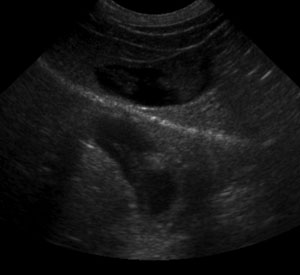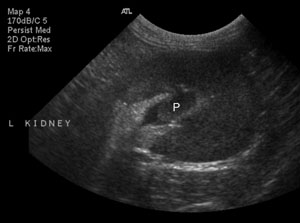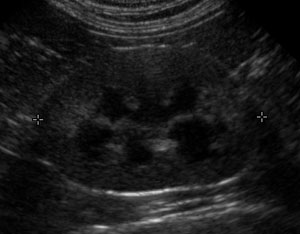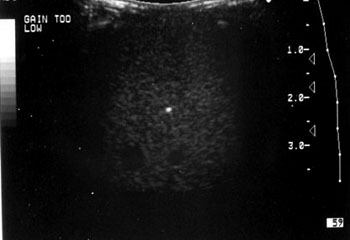We all know that there are artifacts on just about every ultrasound image we look at. The physics of the sound waves interacting with tissues is complicated! But many of these artifacts need to be recognized and acknowledged so that you can move on with interpreting the images. The mirror image … [Read more...]
Feline chronic renal disease – acute presentation
Last week I wrote about the signs of chronic renal disease in cats. Ultrasound often shows small kidneys that may be irregular, have poor corticomedullary distinction, mineralization or pyelectasia. We see these changes commonly in cats with no or minimal clinical or biochemical signs of renal … [Read more...]
Ultrasound of cats with chronic renal disease
Chronic renal disease is one of the most common ultrasonographic findings in older cats. If you're doing ultrasounds on cats, you're sure to see signs of chronic renal changes on a daily basis. Today I'll talk about the renal features to evaluate. The normal kidney Normal kidneys in cats are oval … [Read more...]
Ultrasound controls part II
In Ultrasound controls part I, I described the time-gain compensation controls and how they can optimize your image. Once those are set, it's time to look at the other three controls on the machine; B-mode gain, depth and focal zones. Each of them has a different and important effect on your … [Read more...]
The 5 hardest things to learn in ultrasound
At our recent ultrasound course, I took an unofficial poll of the participants to see what they found to be the hardest things to learn in abdominal ultrasound. The discipline requires knowledge of anatomy, understanding of ultrasound physics, and hand/eye coordination to master. Here are some of … [Read more...]
- « Previous Page
- 1
- 2
- 3
- 4
- 5
- …
- 7
- Next Page »




Recent Comments